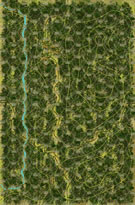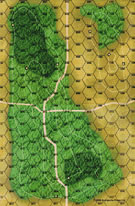|
San Juan Heights To Hell With Spain! #5 |
||
|---|---|---|
| (Defender) Kingdom of Spain | vs | United States (Attacker) |
| Formations Involved |
|---|

| Total | |
|---|---|
| Side 1 | 1 |
| Draw | 0 |
| Side 2 | 1 |
| Overall Rating, 3 votes |
|---|
|
4
|
| Scenario Rank: --- of 913 |
| Parent Game | To Hell With Spain! |
|---|---|
| Historicity | Historical |
| Date | 1898-07-01 |
| Start Time | 08:00 |
| Turn Count | 30 |
| Visibility | Day |
| Counters | 153 |
| Net Morale | 0 |
| Net Initiative | 1 |
| Maps | 0: 35, 9 |
| Layout Dimensions | 43 x 28 cm 17 x 11 in |
| Play Bounty | 195 |
| AAR Bounty | 171 |
| Total Plays | 2 |
| Total AARs | 1 |
| Battle Types |
|---|
| Hill Control |
| Inflict Enemy Casualties |
| Conditions |
|---|
| Anti-infantry Wire |
| Entrenchments |
| Terrain Mods |
| Scenario Requirements & Playability | |
|---|---|
| Battle of the Bulge | Maps |
| To Hell With Spain! | Base Game |
| Kokoda Trail | Maps |
| Introduction |
|---|
|
General Shafter’s plan for the main assault on Santiago had many flaws. He had far too little artillery support to effectively suppress the entrenched Spanish defenders on the heights east of the city. Then, his diversionary assault at the River Aguadores failed to draw any Spaniards away from Santiago, as the Spanish had simply dismantled the only bridge there and thus left the river impassable. Then there was the fact that Shafter planned to deploy his force for battle by marching it down a narrow jungle road, across a stream and then out into the open right in the face of the Spanish defenders. That meant the Spaniards would have the Americans within rifle range as soon as the latter appeared, single-file, out of the jungle. The Spaniards made this all the more likely by lining the entire forest front with barbed wire except where the road exited the trees. Brigadier General Adna Chaffee strongly objected to this plan, saying the Spaniards would “have their guns trained on the openings. If our men leave the cover and reach the plain from [that road] alone they will be piled so high that they will block the road.” But luckily for Shafter, General Linares’ plan was just as bad. He deployed his army evenly around the entire perimeter of Santiago rather than concentrating it eastward to face Shafter’s army. So the entire Spanish force standing in the way of Shafter’s 8,000 men amounted to roughly a tenth of that. |
| Conclusion |
|---|
|
The lead American units on the Camino Real successfully exited the jungle and began to form lines of battle . . . but were then told to halt and await further orders. The anticipated casualties then mounted quickly when Lawton’s planned flanking maneuver from the north failed to materialize and no orders to advance were received. More units exited the jungle either on the road or by bushwhacking off-road and cutting through the barbed wire, but the latter resulted in terrible casualties. Third Brigade lost its commander and two of its regimental commanders while still forming lines, while 6th Infantry Regiment lost 127 men in ten minutes after bursting out of the jungle right in the face of the Spanish right flank. An Army Signal Corps balloon that had been brought up to track troop movements instead served to fix the position of American troops in the jungle underneath it, and the latter suffered badly until the balloon fell to Spanish rifle fire. Desperate calls from Shafter to Lawton to withdraw from El Caney and join the main battle fell on deaf ears, and by then Shafter was of little use anyway as he was bedridden with gout, anxiety and malaria. Finally, the dismounted cavalry near Kettle Hill on the American right received an order to advance around two o’clock, and the already heat-exhausted men began to make their way up the hill with units intermingled and no real order. Colonel Roosevelt reported encountering regiments that were firing in place but not advancing because they had not received the order to advance, but he pushed past them and soon everyone was on the march. Most Spanish troops abandoned Kettle Hill and made for the trenches to the rear before the Americans reached the summit. As the Americans formed up on Kettle Hill for another charge, Gatling guns raked the Spanish trenches on San Juan Hill as American infantry advanced there. The Spanish began to break and flee the trenches, but even then confusion reigned among the Americans with buglers sounding a withdrawal just as C Company, 16th Infantry Regiment was about to reach the summit. The wavering Americans eventually got their advance going again, and the remaining Spanish on the hilltop were finally overwhelmed as the dismounted cavalry from Kettle Hill reached the summit of San Juan Hill and converged with the American infantry there. But the Americans had received orders to hold the hilltops in anticipation of a Spanish counterattack, leaving the Spanish still in possession of their secondary trench lines farther west. It had been a costly victory. The Americans took almost exactly ten percent overall casualties in the battles of El Caney and San Juan Heights, losses that took the fight out of Fifth Corps. Reports of incoming Spanish reinforcements caused General Shafter to spend the next two days actually talking about abandoning the Heights and pulling back to El Siboney. But Lawton and others convinced him to keep Fifth Corps in position, a good call since the Spanish could not have brought enough forces to bear to dislodge even a weakened Fifth Corps. |
| 1 Errata Item | |
|---|---|
| Scen 5 |
Under the Spanish leaders, "Mayor" should be "Comandante." (rerathbun
on 2019 Mar 18)
|
| Sir! Please consider joining our Soiree | ||||||||||||||
|---|---|---|---|---|---|---|---|---|---|---|---|---|---|---|
Inconveniently, the answer to my American adversary was no, far too often. I have a regimental sized force of regulars, fleshed out with a battalion of militia. My commanding Coronel is a bit of a yutz, but the other leaders are solid. I have wire placed in front of my force to slow a direct attack. I should have disposed of at least 1/2 of my entrenchment counters. Otherwise, I have solid position in the path of a division of blue-belly colonial upstarts. The attack begins with Buffalo soldiers on my left flank and colored infantry attacking on the right. The Americans march along the trail quite well. Breaking into the open, their commanders become confused. The Buffalo soldiers march went reasonably well, considering the command handicap. They reach their starting point near the rear left flank about the same time as the colored infantry reached right most wire. 2 separate battles enthused on opposite ends of the hill. The Buffalo soldiers bogged down as they could not enough follow-on force for their attack. The colored infantry did well, breaching the wire and pressing on to the blockhouse. The regulars followed the colored troops. This worked well for a while, but as the forward elements of the attack became disorganized, the problems of segregation began to tell. The Commandante and Coronel, in the blockhouse,held off the American attacks quite well. I was impressed with how the pansy 7-0-0 Coronel was holding up under pressure. The Americans were able to eventually force flanking fire which in 2 turns reduced the blockhouse defense. By then I had accomplished my goal of having one corner pocket being unassailible before the end of the game. We call it with 2 turns to go, and I still have good order forces in 4 trenches, 3 of which are mutually supporting. The butcher's bill was steep. The Americans lost 13 steps, I lost 8 plus the Coronel and the Commandante. |
||||||||||||||
| 0 Comments |

 HwSp004
HwSp004 
































